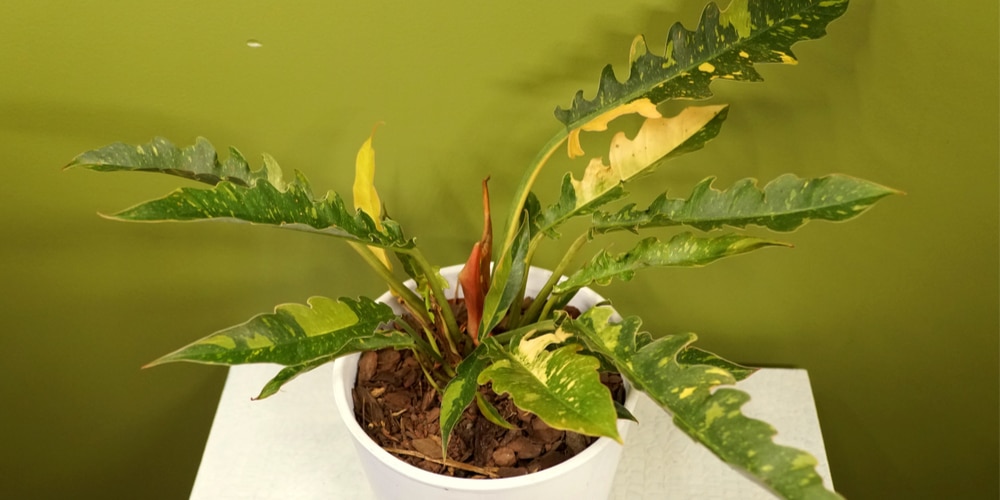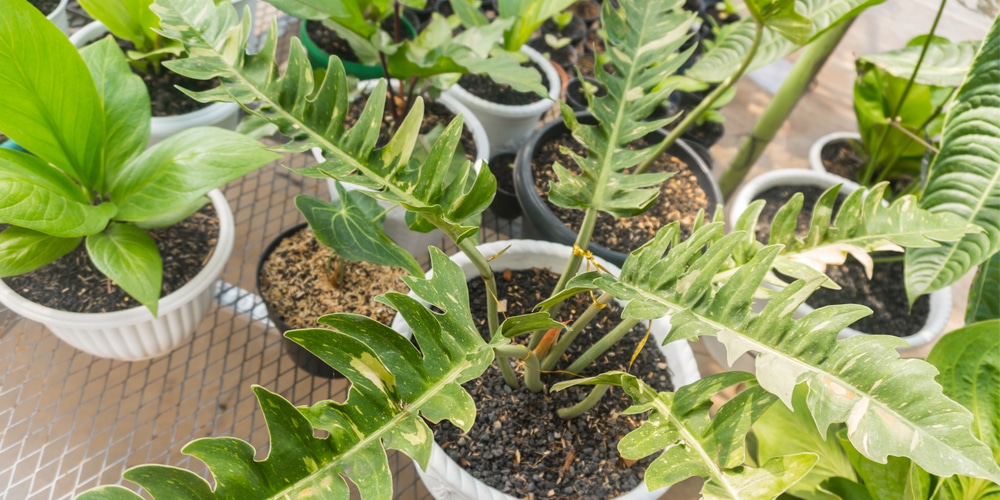Philodendrons are among the best houseplants you can have in your home or office. And among Philodendrons, the Ring of Fire is one of the most beautiful and easy to take care of.
They are easy to grow, attractive, and help cleanse the air indoors of toxins like benzene found in cigarettes, formaldehyde from new wood furniture and carpets, and xylene from paint and varnish trichloroethylene and other pollutants.
Philodendron houseplants also give off oxygen at night, which makes them perfect bedroom plants. Let’s look at how to care for a philodendron ring of fire correctly.
What is a Philodendron Ring of Fire?

The philodendron ring of fire is a beautiful tropical plant that is native to the rainforests of South America. They are also found in many sub-tropical regions and are part of the Araceae family.
The Philodendron ring of fire is eye-catching due to its colorful and spiky leaves. It’s a popular choice for plant lovers worldwide. This plant has attractive foliage ranging from orange and pink to red, green, and even white. These plants make an excellent centerpiece for any room.
The philodendron ring of fire is toxic to humans and animals. They can cause vomiting if ingested but more commonly cause an allergic reaction to the skin when handled. It’s, therefore, best to keep these plants away from young children and animals.
Care Requirements for a Philodendron Ring of Fire
Place your Philodendron ring of fire in a room away from direct sun, drafts, and cold temperatures. In the right conditions, these plants are relatively easy to care for. Here are some tips to help you grow and care for a healthy philodendron ring of fire.
Sunlight needs
Philodendrons are very adaptable to different types of light conditions but prefer to be placed in indirect sunlight. You can keep your Philodendron Ring of Fire plant in a bright room or near a window where it will get at least four to six hours of sunlight daily. Don’t leave your plant in the full sun. When grown in the wild, taller trees will overshadow these plants, so they don’t like too much sun, although they are tropical. The leaves can get sunburnt if they are left in the full sun.
Watering requirements
Philodendron ring of fire like moist soil, but shouldn’t be overwatered. Wait until the top of the earth is dry before watering your Philodendron Ring of Fire plant again. Never let your Philodendron sit in water because it can cause root rot and eventually kill the plant. It’s best to water from the bottom by placing the pot in a pan or sink full of lukewarm water. Let it soak for 15 minutes or so.
Pests
Like other houseplants and especially tropical foliage plants, Philodendrons are also prone to getting pests like mealybugs, scale insects, thrips, or spider mites. If you see clusters of tiny bugs huddled together on the undersides of
leaves, this is probably an indication of mealybugs. They look like tiny cotton balls. Use rubbing alcohol, insecticidal soap, or just use an old toothbrush to brush them away.
The same goes for scale insects that resemble barnacles on the undersides of leaves. These suckers also attack your plant’s roots, so it’s best to be proactive when trying to get rid of these uninvited guests in your home.
Humidity
Philodendrons are tropical plants, so the ring of fire enjoys having at least 50% humidity in their environment. If you have a larger plant, consider getting a humidifier to increase the air moisture or use a pebble tray filled with water under your
potted plant. Make sure that the bottom of your pot sits on top of the rocks and water so it can help increase humidity levels around your houseplants.
Fertilization
If you’ve noticed that your Philodendron is looking a little thin or just isn’t thriving, it’s probably due to a lack of food and care over a long period of time. The philodendron ring of fire does need to be fertilized regularly. You can either use a tropical plant fertilizer or a standard houseplant fertilizer at half the recommended strength.
Conclusion
Philodendrons can survive inside your home even if you don’t have a green thumb. Just keep these tips in mind when caring for your plant, and it’ll stay healthy for years. If you’re wondering which type of philodendron to choose, there are many options. The philodendron ring of fire is for you if you’re looking for an eye-catching plant that’s colorful and easy to care for.
